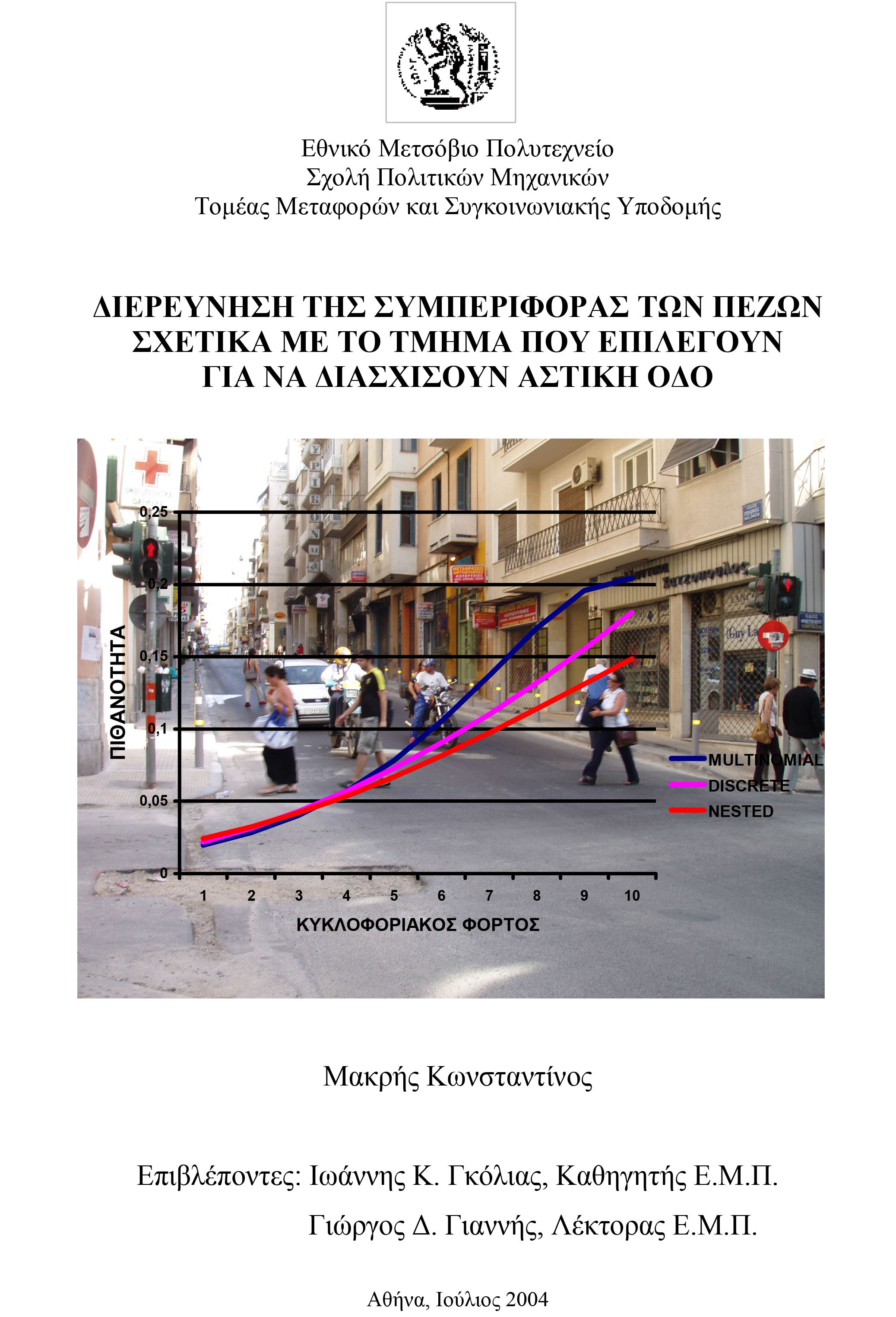
This Diploma Thesis aims to investigate the pedestrian behavior on crossing an urban road section. More specifically, is an attempt to describe in which way a pedestrian chooses a part of a particular block, to cross a road. In this way, with the use of three mathematical models, which constitute a part of Discrete Choice Theory, one can analyze the impact of certain parameters, on which the pedestrian bases his decision about in which section he will cross. These parameters relate not only to road and traffic characteristics, but also with pedestrian’s personal characteristics. Such parameters are vehicle flow, illegal parking and also pedestrian’s personal characteristics such as gender, origin, etc. The models used are Multinomial Logit Model, Discrete Choice Model and Nested Logit Model. The Nested Logit Model is the most appropriate for the description of pedestrian behavior, the application of which has led to the identification of the parameters’ impacts on the pedestrian choice.
| ID | ad16 |
| Presentation | |
| Full Text | |
| Tags | driver behaviour, pedestrians, statistical modelling, traffic management |






